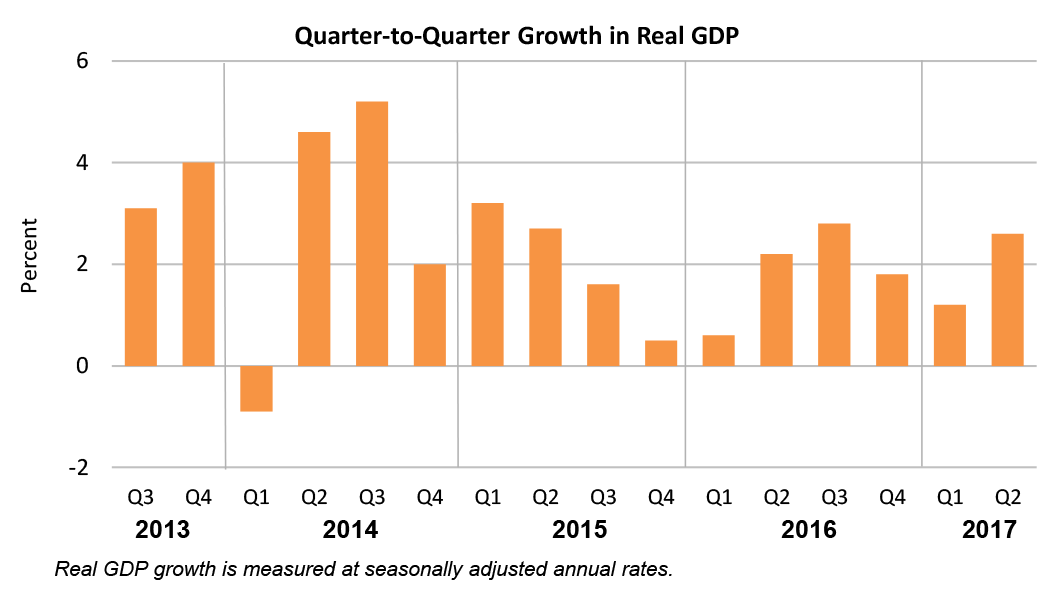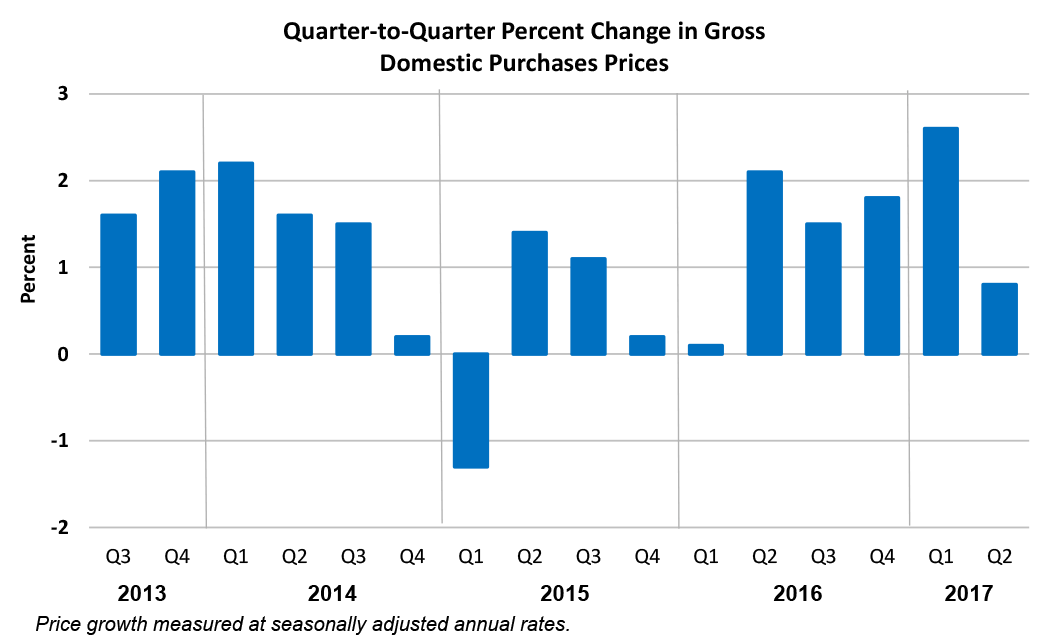Real gross domestic product (GDP) increased 2.6 percent in the second quarter of 2017, according to the “advance” estimate released by the Bureau of Economic Analysis. In the first quarter, real GDP increased 1.2 percent (revised).

GDP highlights
The second‐quarter increase in real GDP reflected increases in both consumer spending on goods and services as well as increases in business investment, exports, and federal government spending.
The increase in consumer spending was led by increases in housing and utilities, health care, and recreational goods and vehicles. The increase in business investment reflected increases in all three components: structures, equipment, and intellectual property products.
Offsetting these increases in real GDP were declines in housing investment, inventory investment, and state and local government spending.
Personal income and saving
Real disposable personal income—personal income adjusted for taxes and inflation—increased 3.2 percent in the second quarter after increasing 2.8 percent in the first quarter. Personal saving as a percent of disposable personal income was 3.8 percent in the second quarter, compared with 3.9 percent in the first quarter.
Second‐quarter prices

Prices of goods and services purchased by U.S. residents increased 0.8 percent in the second quarter of 2017, after increasing 2.6 percent in the first quarter.
Food prices increased in the second quarter, while energy prices decreased.
Excluding food and energy, prices increased 1.3 percent in the second quarter, compared with an increase of 2.3 percent in the first quarter.
Annual update
BEA also released its annual update of the national income and product accounts that incorporated newly available and revised source data for 2014 – 2016. From the fourth quarter of 2013 to the first quarter of 2017, real GDP increased at an annual average rate of 2.1 percent, the same as previously estimated.
For more information, read the full report.